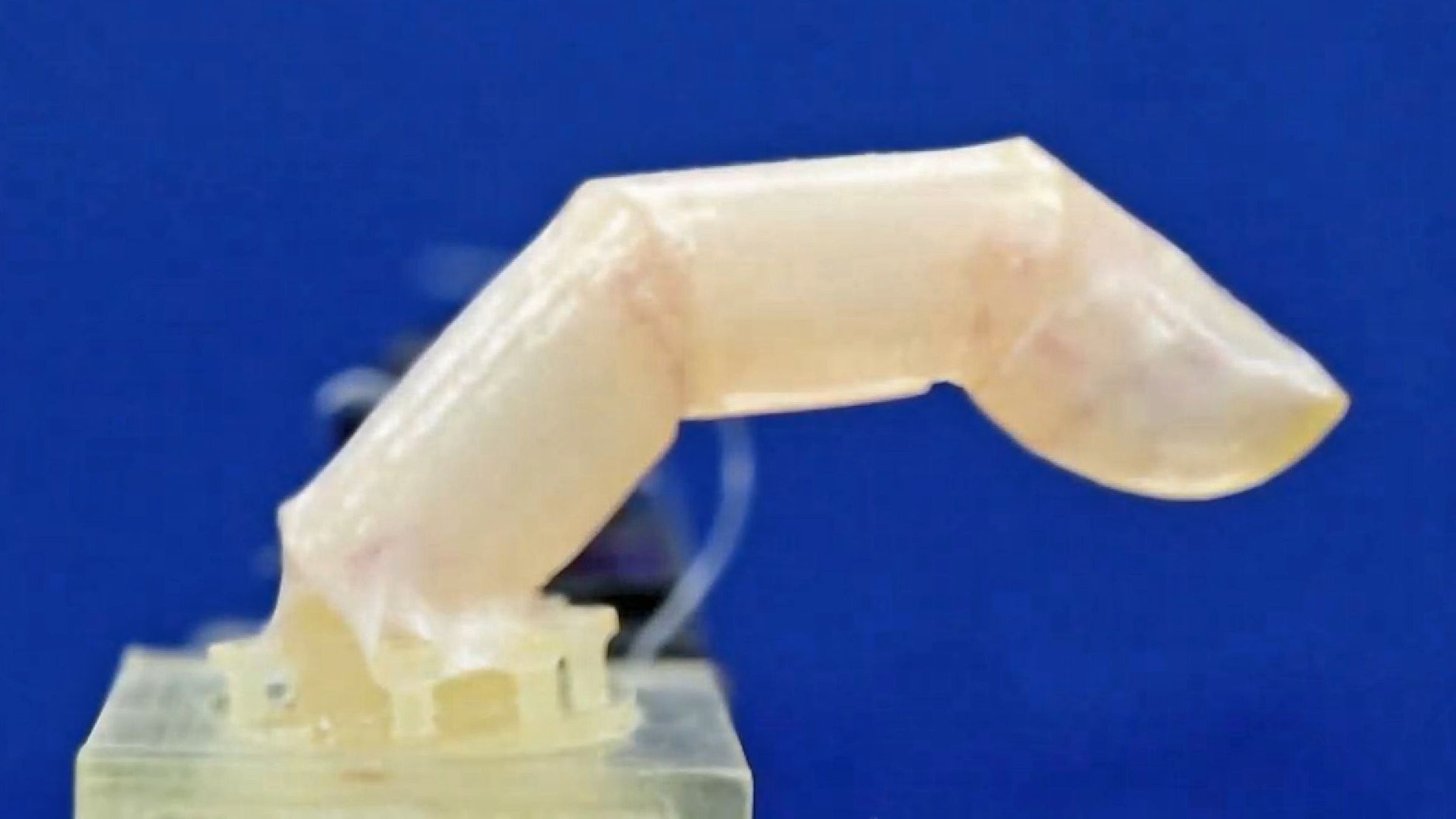Roboticists from the University of Tokyo have taken a tiny step toward creating the Terminator. They’ve built an articulated robot finger that’s seamlessly covered in living human skin.
There are many reasons why our current attempts to build humanoid robots with lifelike appearances always seem to end up somewhere in the uncanny valley, where their imperfect resemblance to real human beings invokes a strong negative emotional reaction from us. The way a humanoid robot moves certainly contributes to its not-quite-right appearance, but more often than not it’s the artificial materials used to recreate human skin that make humanoids especially creepy.
Materials like rubber and silicone don’t move, bend, wrinkle, or even respond to light the same way human skin does, and it’s immediately obvious to our eyes and brains when artificial skin has been used. Science fiction has warned us time and time again about the potential risks of creating robotic humans that are indistinguishable from the real thing, but pushing through the uncanny valley will be important if humans are to eventually interact with robots in a meaningful way.
So we can either continue to work on improving artificial skin to make it more believable, or admit that there will never be a substitute and just use the real thing. That’s the route this team of researchers from the University of Tokyo has chosen, and in a recently published paper in the journal Matter, they detail a new approach for seamlessly wrapping a robotic finger in living skin tissue.
The most obvious way to cover an artificial being in human skin is to grow sheets of the material in a lab and wrap it around a robot’s various parts, in a similar way to how replacement skin is grown for burn victims. But even with a skilled application, that still leaves seams, something real humans don’t have, and limits how naturally the skin can flex and move if the fit isn’t flawless.

The researchers took an entirely different approach here. A relatively simple robotic finger with three moving joints was first submerged in a solution made up of collagen, a structural protein, and dermal fibroblasts, the primary type of human cells found in skin’s connective tissue and its sub-surface dermis layer. This solution shrank and tightly conformed itself to the robotic finger, creating a flexible foundation on which to apply multiple layers of epidermal keratinocytes, the primary type of human cells found in skin’s outer epidermis layer.
The outer layer of epidermal keratinocytes not only gave the robotic finger a skin-like texture (minus any melanin and the effect blood has on its appearance) but it also exhibited enough strength and elasticity to tightly conform to the changing shape of the robotic finger without tearing. And since the finger’s epidermis was created in a process that didn’t result in any seams, like real human skin it’s completely waterproof: a big advantage for robots whose electronics and mechanical parts hidden away inside aren’t water-friendly.

The other advantage to using real human skin is that it can heal, and often leave no sign of the damage afterwards. The researchers deliberately damaged the finger’s skin — something that will regularly happen when humanoid robots learn to safely navigate the world — and were able to heal the wound by covering it in a collagen ‘bandage’ that allowed the skin to continue to naturally bend and flex afterwards without further damage.
This research is just the earliest steps toward creating believable humanoid bots, however. The layer of human skin covering the finger is far less durable than natural human skin, and the robot is unable to provide it with a constant supply of nutrients that would allow it to grow and regenerate. As a result, it doesn’t last very long, but the researchers are hoping to improve its longevity with future iterations that incorporate more complex structures and functionality, including neurons that could allow it to feel, and even sweat glands — so one day, robots might even stink like we do.
